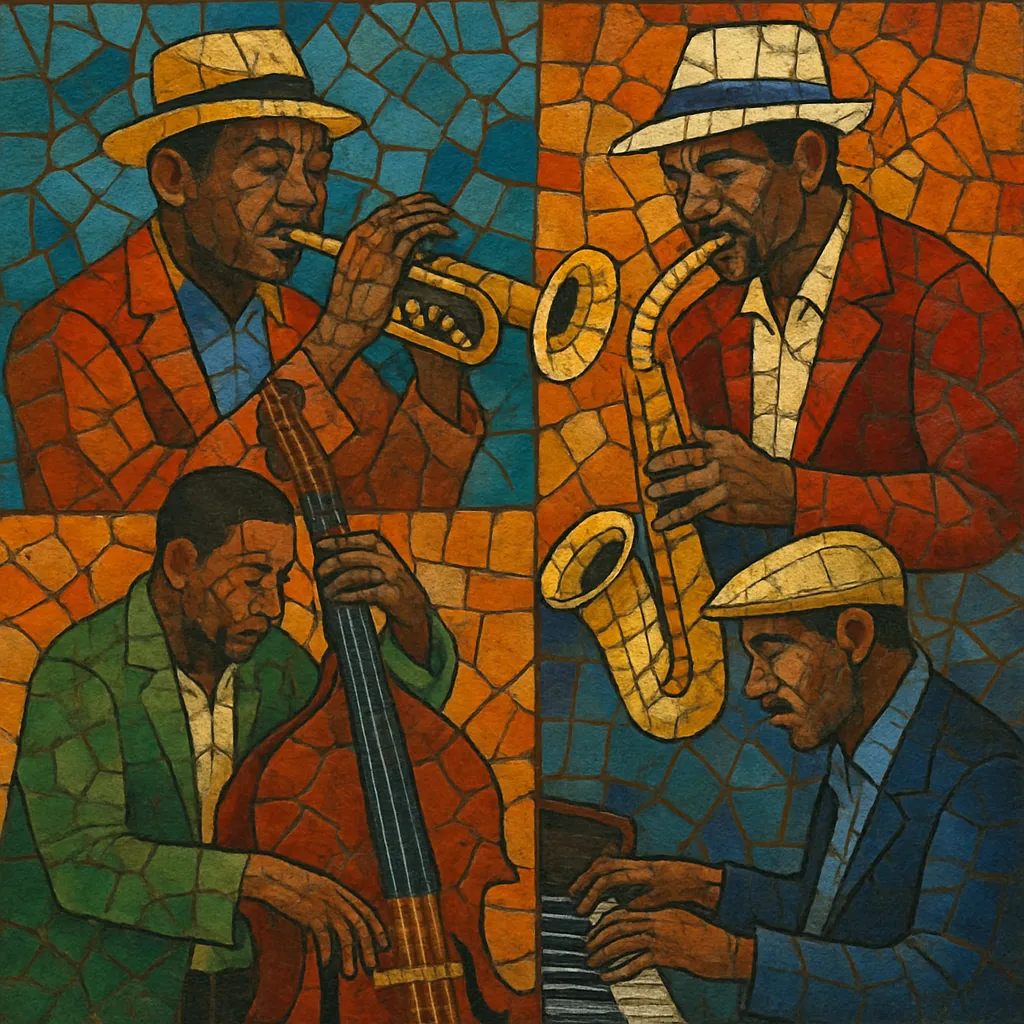Cape jazz is a South African jazz idiom rooted in the musical life of Cape Town, especially the multicultural neighborhoods such as District Six. It blends modern jazz vocabulary with the ghoema (goema) carnival beat, kwela and township jive rhythms, and melodic turns drawn from Cape Malay song, church hymns, and local folk traditions.
The style typically marries a swinging, danceable 2/4 or lightly triplet-inflected feel with improvisation, blues inflection, and modal harmony. Its sound ranges from intimate, lyrical ensembles to exuberant, street-parade energy, often featuring saxophone- and piano-led themes, call-and-response figures, and grooves designed for collective participation.
Cape jazz emerged in the late 1950s and early 1960s within Cape Town’s vibrant, mixed communities. Musicians synthesized American bebop and hard bop with local social-dance traditions, especially the ghoema beat that drives Cape Town’s New Year carnival troupes. Early exponents shaped a language in which jazz heads and harmonies rode on top of distinctly Cape rhythms, while pennywhistle/kwela phrasing and township jive added a buoyant, participatory character.
The forced removals from District Six and broader apartheid repression displaced communities yet also intensified the music’s identity and political resonance. Bands and bandleaders such as Abdullah Ibrahim (Dollar Brand), Winston Mankunku Ngozi, and Chris McGregor carried the sound forward—some into exile. The Blue Notes and related ensembles helped introduce South African jazz idioms to Europe, where the ghoema-inflected swing and hymn-like themes stood out within avant-garde and post-bop circles.
With the end of apartheid, Cape jazz experienced renewed visibility at home through recordings, festivals, and educational initiatives. Artists such as Robbie Jansen, Basil Coetzee, Mac McKenzie, Hilton Schilder, and Errol Dyers championed the goema-jazz lineage, while younger players integrated the language into contemporary jazz and world-fusion contexts. Today, Cape jazz is recognized as a cornerstone of South African musical heritage and a distinctive branch of global jazz.
Use small-to-medium jazz ensembles: saxophones (tenor/alto), trumpet or flugelhorn, piano, guitar (often clean or lightly overdriven for goema), double bass or electric bass, and drum kit. Add accordion, pennywhistle, or percussion (tambourine, hand drums) to invoke carnival roots.
Center the groove on the ghoema beat—a lively, danceable 2/4 feel with a subtle triplet swing. Keep the kick sturdy on beat 1, a crisp snare accent on beat 2, and use syncopated hi-hat/ride patterns. Tempos typically range from 90–140 BPM, with a buoyant, forward motion reminiscent of street-parade energy. Interlock bass lines with the drum pattern using off-beat anticipations and walking or riff-based figures.
Combine blues vocabulary with modal and post-bop harmony. Common practice includes ii–V–I progressions seasoned with extended chords (9ths/11ths/13ths), secondary dominants, and modal interchange. Melodies often feature pentatonic and minor-mode colors with call-and-response phrasing, hymn-like cadences, and short, singable motifs suitable for communal participation.
Use the classic head–solos–head jazz format. Arrange riffs and background horn lines that lock with the rhythm section. Contrast lyrical piano or sax themes with robust ensemble shouts; allow space for percussion breaks that spotlight the ghoema feel. Guitar can play percussive, lightly syncopated comping patterns that outline harmony while reinforcing the groove.
Prioritize feel and interaction: drummers should "lean into" the backbeat while keeping a gentle swing; bassists should balance walking motion with syncopated hooks. Soloists blend blues bends and bebop lines with melodic motifs derived from Cape folk/hymn sources. If adding vocals, consider Afrikaans (Kaaps), English, or isiXhosa lyrics that reflect everyday life, celebration, or social commentary.
Record drums with a natural, roomy ambience to capture procession-like energy. Favor warm piano tones and rounded horn timbres; avoid overly clinical quantization so the groove breathes. Layer light percussion and group handclaps to evoke carnival textures.


